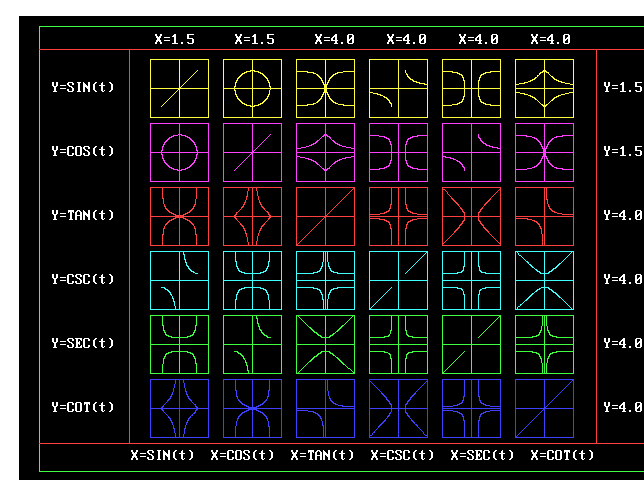-
Read Symbol defintion
-
Q01 |
- Pythagoras
- Q02 | - Pythagorean Law
- Q03 | - Pythagorean triples
- Q04 | - Pythagorean relations
- Q05 | - Diagrams of unit circle and unit hyperbola
- Q02 | - Pythagorean Law
Q01. Pythagoras
Greek mathematician
- He was greek philosopher and mathematician
- He lived 6th century B.C.
- His important contribution is the Pythagorean law
Go to Begin
Q02. Pythagorean Law
Definition
- Right angle triangle ABC
- c is hypothesis
- a and b are other two sides
- Then c^2 = a^2 + b^2
Go to Begin
Q03. Pythagorean triples
Definition
- Numbers a, b, c satisfy the pythagean law
- Example : 3, 4, 5 are Pythagorean triples
- 3, 4, 5 and their multiples are Pythagorean triples. e.g. 6, 8, 10
- 5, 12, 13 & their multiples are Pythagorean triples. e.g. 10, 24, 26
- 8, 15, 17 & their multiples are Pythagorean triples. e.g. 16, 36, 34
Go to Begin
Q04. Pythagorean relations
Sine and cosine functions
- Right triangle ABC
- c = hypothesis, a = opposite side and b = adjacent side
- Sin(A) = a/c and cos(A) = b/c
- Cos(A)^2 + sin(A)^2 = (a^2 + b^2)/(c^2)
- Since c^2 = a^2 + b^2
- Hence Cos(A)^2 + sin(A)^2 = 1
- This is a unit circle defined by x = cos(t) and y = sin(t)
- Cos(A)^2 + sin(A)^2 = 1
- Divide both sides by cos(A)
- Since tan(A) = sin(A)/cos(A) and sec(A) = 1/cos(A)
- Hence 1 + tan(A)^2 = sec(A)^2
- This is a unit hyperbola defined by x = tan(t) and y = sec(t)
- Cos(A)^2 + sin(A)^2 = 1
- Divide both sides by sin(A)
- Since cot(A) = cos(A)/sin(A) and css(A) = 1/sin(A)
- Hence 1 + cot(A)^2 = csc(A)^2
- This is a unit hyperbola defined by x = cot(t) and y = csc(t)
Go to Begin
Q05. Diagrams of unit circle and hyperbola

- x = cos(t) and y = sin(t) : Center (0,0) and radius = 1
- x = sin(t) and y = cos(t) : Center (0,0) and radius = 1
- x = tan(t) and y = sec(t) : Center (0,0) and principal axis is y = 0
- x = cot(t) and y = csc(t) : Center (0,0) and principal axis is y = 0
- x = sec(t) and y = tan(t) : Center (0,0) and principal axis is x = 0
- x = csc(t) and y = cot(t) : Center (0,0) and principal axis is x = 0
Go to Begin
